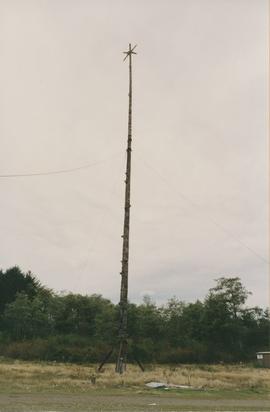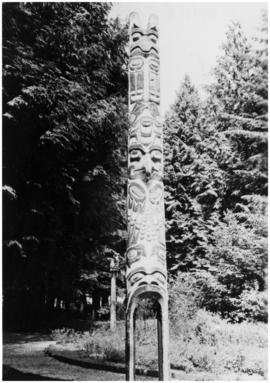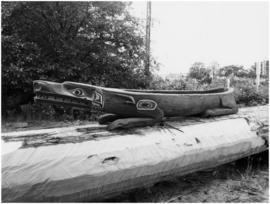Item consists of a recording of Learning Kwak'wala: Book 1 My Village My House, and it features Agnes Cranmer, Margaret Cook, and Jay Powell engaging in vocabulary and grammar exercises in the workbook, Jay Powell asks the questions in English and Agnes Cranmer and Margaret Cook give the response in Kwak'wala; Side A: pages 36, 4-18 begins with the Kwak'wala alphabet, and covers the vocabulary for the types of houses and villages, places in the villages their locations with a focus on Alert Bay and surrounding villages, where someone is going, asking what something is, things found at the breakwater, things found at the grocery store and how to express when someone wants something, things found in a school and phrases used in a school setting, vocabulary for things found in nature and how to describe the weather, for the English translation of bak'wam "Indian" is used; Side B: pages 19-33, and covers things used when camping and where things are in the camp, parts of a house and things found there, grammar for who owns a house, vocabulary associated with cooking, eating, and the kitchen, items found in the living room, items found in the bathroom, things in the bedroom, numbers and how to say how many houses and boats there are. Also begins book 2 with some of the vocabulary for family members, but this is also covered in the tape specific to book 2. Recorded on both sides.




